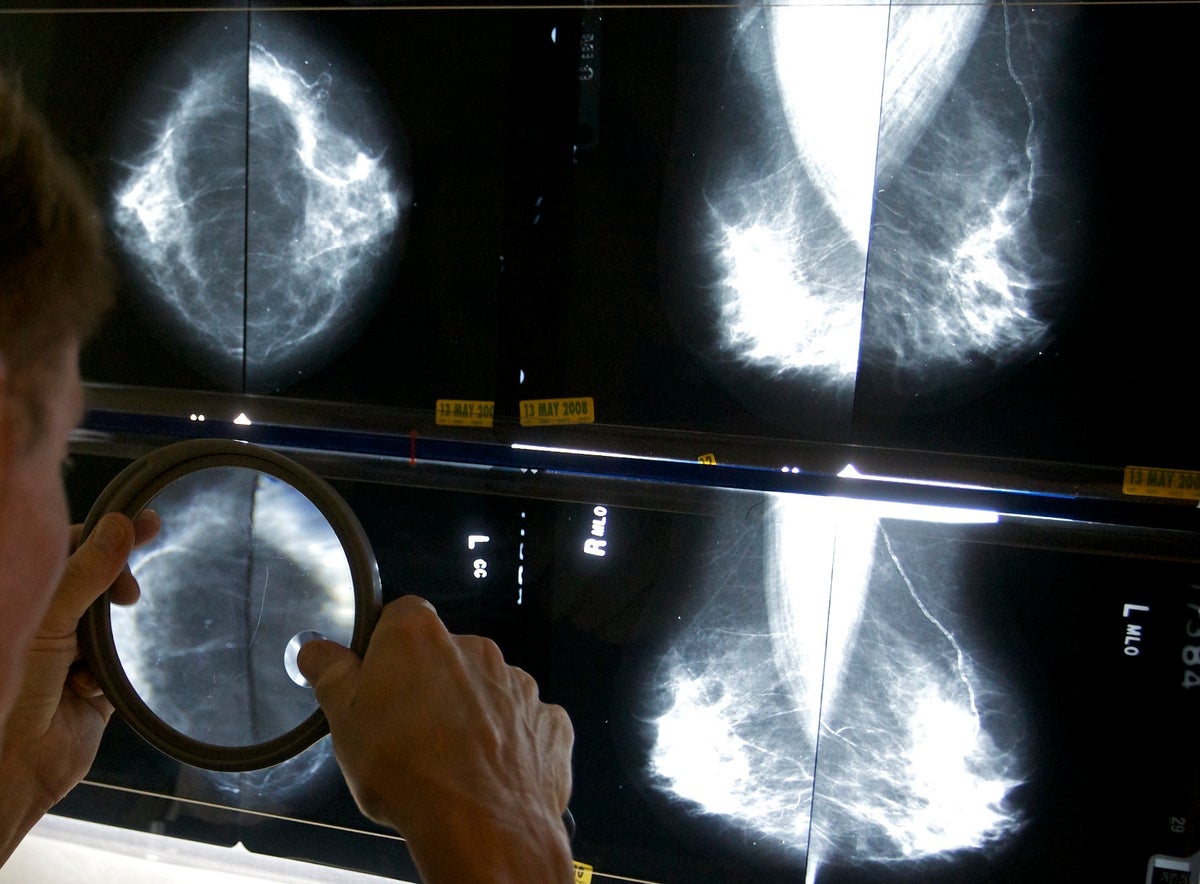
Annual mammograms are recommended indefinitely for breast cancer survivors in many countries, including the U.S., but a large British study finds that less frequent screening is just as good.
Yearly screening is meant to monitor whether cancer has come back. All that testing causes anxiety for patients and costs money.
Until now, there wasn’t solid evidence for when women could ease back on yearly mammograms, said Janet Dunn of the University of Warwick, who led the study funded by the research arm of the U.K.’s National Health Service.
The study showed less frequent mammograms are just as good as a yearly schedule for breast cancer survivors 50 and older.
“It’s really all about giving the ladies the all-clear a bit earlier if you can,” Dunn said. The findings were being discussed Friday at the San Antonio Breast Cancer Symposium. The unpublished study has not yet gone through a full peer review.
Researchers followed more than 5,200 women. The participants were 50 and older, and had undergone successful breast cancer surgery, mostly lumpectomies. After three years of annual screening, half were randomly assigned to get mammograms every year and the other half to get less frequent ones.
Both groups did well, with remarkably similar results. Six years later, 95% of both groups were still cancer free. Breast cancer survival was 98% in both groups.
“This is an eye-opening study,” said breast cancer specialist Dr. Laura Esserman of the University of California, San Francisco who was not involved in the new study but is leading research on a personalized approach to screening. “I think people will be very surprised.”
The new study is “very strong,” but more research will be needed to change U.S. guidelines, said Corinne Leach of Moffitt Cancer Center in Tampa, Florida. She led the development of a 2015 U.S. guideline that calls for indefinite annual screening for these kinds of patients.
“One study alone typically does not move the needle on guidelines,” Leach said. “This study inspires other researchers to do more work in this area. And that is what could lead to a change.”
In the new study, most women in both groups followed their assigned screening schedule. Some in the annual group missed screenings and some in the less frequent group were screened ahead of schedule. When the researchers analyzed the findings based on what the women actually did, the conclusions remained the same.
Survivors “can breathe easily” three years after surgery as they resume a less frequent mammogram schedule, Dunn said. The findings are likely to change practice in the U.K. and “will be influential globally,” she said.
How often is less frequent? In the study, it depended on the type of surgery.
In the less-frequent screening group, women who’d had mastectomies had a mammogram once every three years. Those who’d had lumpectomies, also called breast conservation surgery, had mammograms every two years.
The findings do not apply to younger breast cancer survivors, who were excluded from the study and tend to have more aggressive cancers. And women who have both breasts removed don't need mammograms.
“It’s high time that we have a more personalized approach to screening, not just for women who’ve never had breast cancer, but for those who’ve had breast cancer,” Esserman said.







